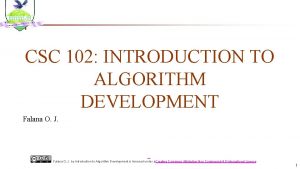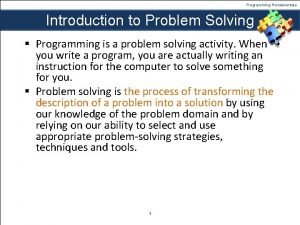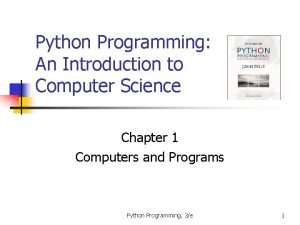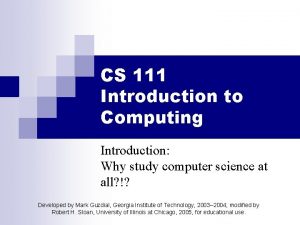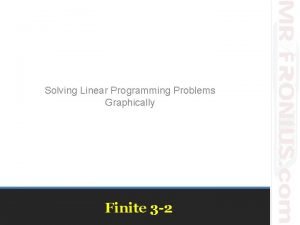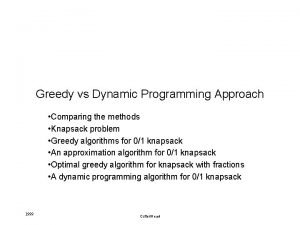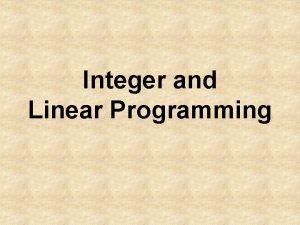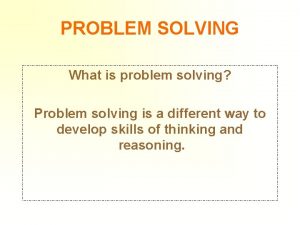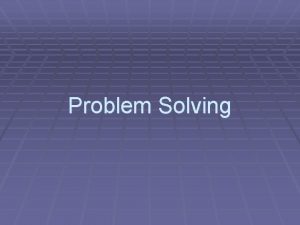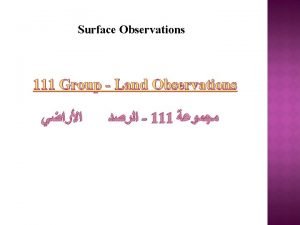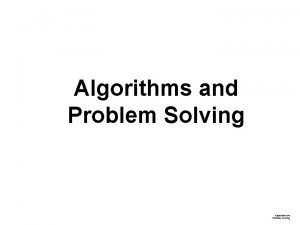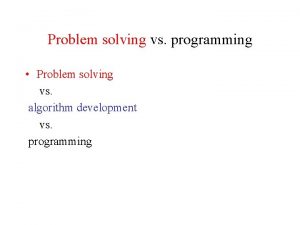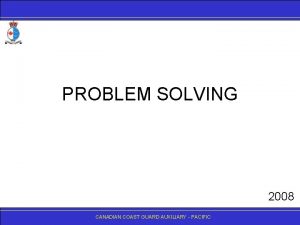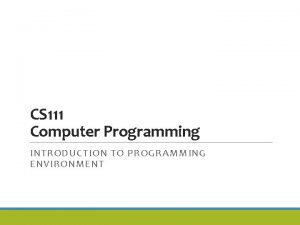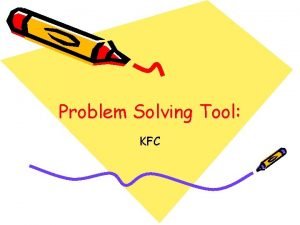CS 111 Computer Programming INTRODUCTION TO PROBLEM SOLVING

CS 111 Computer Programming INTRODUCTION TO PROBLEM SOLVING

ALGORITHMS AND FLOWCHARTS A typical programming task can be divided into two phases: Problem solving phase ◦ produce an ordered sequence of steps that describe solution of problem ◦ this sequence of steps is called an algorithm Implementation phase ◦ implement the program in some programming language

Steps in Problem Solving First produce a general algorithm (one can use pseudocode) Refine the algorithm successively to get step by step detailed algorithm that is very close to a computer language. Pseudocode is an artificial and informal language that helps programmers develop algorithms. Pseudocode is very similar to everyday English.

Pseudocode & Algorithm Example 1: Write an algorithm to determine a student’s final grade and indicate whether it is passing or failing. The final grade is calculated as the average of four marks.

Pseudocode & Algorithm Pseudocode: Input a set of 4 marks Calculate their average by summing and dividing by 4 if average is below 50 Print “FAIL” else Print “PASS”

Pseudocode & Algorithm Detailed Algorithm Step 1: Input M 1, M 2, M 3, M 4 Step 2: GRADE (M 1+M 2+M 3+M 4)/4 Step 3: if (GRADE < 50) then Print “FAIL” else Print “PASS” endif

The Flowchart (Dictionary) A schematic representation of a sequence of operations, as in a manufacturing process or computer program. (Technical) A graphical representation of the sequence of operations in an information system or program. Program flowcharts show the sequence of instructions in a single program or subroutine. Different symbols are used to draw each type of flowchart.

The Flowchart A Flowchart ◦ shows logic of an algorithm ◦ emphasizes individual steps and their interconnections ◦ e. g. control flow from one action to the next

Flowchart Symbols

Example START Input M 1, M 2, M 3, M 4 GRADE (M 1+M 2+M 3+M 4)/4 N IS GRADE<50 Y PRINT “FAIL” PRINT “PASS” STOP Step 1: Input M 1, M 2, M 3, M 4 Step 2: GRADE (M 1+M 2+M 3+M 4)/4 Step 3: if (GRADE <50) then Print “FAIL” else Print “PASS” endif

Example 2 Write an algorithm and draw a flowchart to convert the length in feet to centimeter. Pseudocode: Input the length in feet (Lft) Calculate the length in cm (Lcm) by multiplying LFT with 30 Print length in cm (LCM)

Example 2 Algorithm Step 1: Input Lft Step 2: Lcm Lft x 30 Step 3: Print Lcm START Input Lft Lcm Lft x 30 Print Lcm Flowchart STOP

Example 3 Write an algorithm and draw a flowchart that will read the two sides of a rectangle and calculate its area. Pseudocode Input the width (W) and Length (L) of a rectangle Calculate the area (A) by multiplying L with W Print A

Example 3 Algorithm START Step 1: Input W, L Step 2: A L x W Step 3: Print A Input W, L A Lx. W Print A STOP

Example 4 Write an algorithm and draw a flowchart that will calculate the roots of a quadratic equation Hint: d = sqrt ( ), and the roots are: x 1 = (–b + d)/2 a and x 2 = (–b – d)/2 a

Example 4 Pseudocode: Input the coefficients (a, b, c) of the quadratic equation Calculate d Calculate x 1 Calculate x 2 Print x 1 and x 2

Example 4 Algorithm: Step 3: x 1 (–b + d) / (2 x a) Step 4: x 2 (–b – d) / (2 x a) Step 5: Print x 1, x 2 Input a, b, c d sqrt(b x b – 4 x a x c) Step 1: Input a, b, c Step 2: d sqrt ( START ) x 1 (–b + d) / (2 x a) X 2 (–b – d) / (2 x a) Print x 1 , x 2 STOP
- Slides: 17






